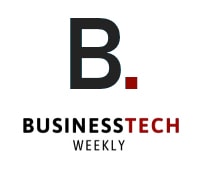Gen Z Side Hustles: Navigating Cybersecurity Vulnerabilities in a Digital Landscape

Gen Z Side Hustles Create New Cybersecurity Vulnerabilities
Nearly half of Generation Z workers (48%) juggling multiple jobs face increased cybersecurity risks due to their extensive use of various work applications and personal devices, according to new research from Kaspersky. The rising trend of participating in the growing gig economy has amplified these concerns.
The study, covering late 2024 to mid-2025, identified over 6 million cyberattacks mimicking common workplace platforms, with Zoom, Microsoft Excel, and Outlook being the primary targets for impersonation. According to the National Institute of Standards and Technology, such impersonation attacks have increased by 300% since 2023.
Digital Exposure and Modern Work Habits
The combination of remote work, multiple gigs, and personal device usage creates an unprecedented attack surface for Gen Z workers. Unlike previous generations who primarily used company-issued devices on corporate networks, younger workers frequently access multiple applications from personal devices in various locations, leading to increased shadow IT security risks in the workplace.
"Gen Z is facing a different kind of cybersecurity threat – not because they're less tech-savvy, but because they're more digitally exposed," explains David Matalon, CEO at Venn. "They're juggling multiple gigs, often working remotely, and doing it all from personal devices."
Security Challenges and Solutions
The research highlights several key vulnerability areas:
- Password management across multiple platforms
- Mixing personal and professional applications
- Use of unsecured networks and devices
- Quick-click habits and inherent trust in popular platforms
Anne Cutler, Cybersecurity Evangelist at Keeper Security, notes: "Gen Z'ers were practically born with iPads in their hands and an inherent trust that popular platforms and devices are safe, whereas older generations have more skepticism toward technology."
Protecting Digital Assets
Modern workplace dynamics require a comprehensive approach to implementing secure BYOD policies for remote workers. Organizations must:
- Implement secure password management systems for both personal and professional accounts
- Exercise caution when accessing work applications on personal devices
- Verify the authenticity of collaboration platform requests and invites
The findings suggest organizations need to adapt their security training approaches for younger workers while maintaining robust protection measures. Chad Cragle, CISO at Deepwatch, emphasizes that traditional training modules may not resonate with Gen Z, recommending "short, practical training scenarios that reflect their experiences and priorities."

